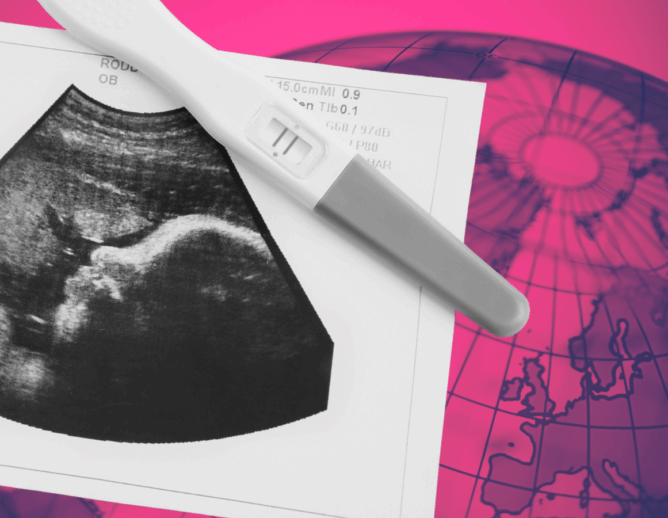In Advocate Christ Medical Center v. Kennedy, the Supreme Court upheld how the Department of Health and Human Services (HHS) calculates payments for hospitals that serve a higher percentage of low-income individuals. Litigation over HHS’ calculation is far from new; in fact, Advocate Christ Medical Center is the second time the Court has ruled on this same Medicare provision in just the past three years alone. Here, more than 200 hospitals argued that how HHS defines low-income patients left them underfunded from 2006 to 2009. Writing for a 7-to-2 majority, Justice Amy Coney Barrett disagreed and upheld HHS’ definition. The decision maintains the status quo, and hospitals will not receive additional funds for this period.
Beyond the impact on hospitals themselves, Advocate Christ Medical Center is the latest example of the Court’s approach to agency interpretation of statutes after the end of Chevron deference — analyzing the text and structure of the law and interpreting the statute itself.
Disproportionate Share Hospitals
Generally, HHS pays hospitals that treat Medicare patients at fixed rates “based on the patient’s diagnosis,” not on how much it costs the hospital to treat the patient. But this fixed rate does not consider that it is often costlier to provide care for low-income individuals compared to higher-income counterparts (even for the same medical conditions). Why? Low-income patients often have poorer health and suffer more complications following medical procedures. Additionally, caring for low-income patients often requires more personnel, such as social workers or interpreters, which, in turn, increases hospitals’ operating costs.
Recognizing the discord between fixed rates and costs of care, Congress established enhanced payments for hospitals that serve a “disproportionate share” of low-income patients. Medicare reimburses these so-called disproportionate-share hospitals (DSH) at a higher rate to help offset the costs of uncompensated care, ensure that low-income individuals receive efficient care, and incentivize hospitals to treat low-income patients.
DSH Payment Formula
Hospital reimbursement rates are determined through what Justice Brett Kavanaugh previously referred to as a “mind-numbingly complex” formula that has, perhaps unsurprisingly, spawned a lot of litigation over DSH payments. This formula adds two fractions to account for two different low-income populations served by DSH hospitals: the Medicare fraction and the Medicaid fraction. As the Court explained in a 2022 decision on DSH payments, the former measures “the hospital’s senior (or disabled) low-income population,” while the latter measures “the hospital’s non-senior (except for disabled) low-income population.”
The Medicare fraction — which was at the heart of the dispute in Advocate Christ Medical Center — uses Medicare patients’ entitlement to supplemental security income (SSI) as a proxy for low-income status. Through the SSI program, the Social Security Administration provides monthly cash payments to aged, blind, or disabled individuals whose income falls below the federal poverty line. The Supreme Court has explained that the SSI program establishes “a federally guaranteed minimum income” for qualifying individuals. But the administration of this program is somewhat complex. For instance, SSI enrollees do not receive automatic monthly cash payments. Rather, they receive federal payments only for the months when their income falls short, meaning eligibility can vary monthly.
Under the DSH statute, the Medicare fraction’s numerator includes patients “entitled to [Medicare Part A] benefits and . . . entitled to [SSI] benefits,” while the denominator comprises the inpatient days of all Medicare patients. HHS interpreted “entitled to SSI benefits” to mean patients who received SSI cash payments during their hospital stays. This interpretation deflated the numerator — thus reducing the Medicare fraction and leading to lower DSH payments.
Over 200 acute-care hospitals challenged how HHS calculates the Medicare fraction, with hospital associations asserting that HHS’ undercount meant hospitals were underpaid by more than $1 billion per year in DSH payments from fiscal years 2006 to 2009. The hospitals lost at every step in the litigation — including before administrative review boards, before HHS, before the district court, and before the Court of Appeals for the D.C. Circuit.
Previous DSH Payment Calculation Litigation
As previously noted, Advocate Christ Medical Center is not the first time the Court resolved a dispute over the Medicare fraction. In 2022, the Supreme Court addressed a similar question in Becerra v. Empire Health Foundation over the meaning of “entitled to Medicare Part A benefits” in the Medicare fraction. There, the Court agreed with HHS’ interpretation that the Medicare fraction includes all days for patients eligible for Medicare Part A benefits — regardless of whether Medicare is paying for the days that the patient received care. That interpretation expanded the denominator, thus reducing the Medicare fraction and leading to lower DSH payments.
In Advocate Christ Medical Center, the hospitals urged the Court to extend the reasoning in Empire Health to conclude that “entitled to SSI benefits” means all Medicare SSI enrollees, not just those who receive SSI cash payments during their hospitalization. Doing so would expand the fraction’s numerator, hence increasing DSH payments. But the Court rejected this argument.
The Court’s Decision
Justice Amy Coney Barrett — writing for a 7-2 majority — adopted a narrow reading of the statute and concluded that the numerator must be determined based on the number of days that a patient is hospitalized and receiving SSI cash payments. The SSI benefits envisaged under the DSH payment formula, the Court ruled, are cash payments. And because eligibility for those payments varies monthly based on an enrollee’s income, an enrollee is entitled to SSI benefits only in the months when their income falls below the federal poverty line. As Justice Barrett put it, “it makes little sense to say that individuals are ‘entitled’ to the benefit in months when they are not even eligible for it.”
The Court distinguished its ruling from Empire Health by emphasizing that Medicare Part A and SSI are different. Medicare Part A is an insurance program, while SSI is a cash assistance program that subsidizes income. As an insurance program, Medicare Part A provides more than payments for immediate medical needs; it also provides protection against future costs for hospital, home health, and hospice care. SSI, on the other hand, is not an “income-insurance program” that protects against unexpected costs; it is “a welfare payment that directly subsidizes recipients’ income,” Justice Barrett explained. What is more, unlike entitlement to SSI payments, which might change monthly, Medicare Part A entitlement does not change. Eligibility for Medicare Part A is automatic and continuous for those who qualify. SSI benefits, on the other hand, are month-to-month payments where eligibility can fluctuate based on one’s income and resources.
To recap, the Court agreed with HHS that a patient is entitled to SSI benefits — and thus should be counted in the numerator of the Medicare fraction — when that patient is eligible to receive an SSI cash payment during the month of their hospitalization. Consequently, the Court’s decisions in Empire Health (which enlarged the denominator) and Advocate Christ Medical (which limited the denominator) both narrow the Medicare fraction and ultimately lower DSH payments.
The Dissent
Justice Ketanji Brown Jackson, who was joined by Justice Sonia Sotomayor in dissent, would have followed Empire Health by interpreting “entitled to SSI benefits” to include all patients “enrolled in the SSI program at the time the hospital served them,” regardless of whether they received cash payments during the month of their hospitalization. This reading better reflects DSH payments’ design and purpose, Justice Jackson explained, which is to ensure that hospitals are appropriately paid for uncompensated care for low-income patients. The Court rejected the invitation to read the statute this way, reasoning that Congress could have written the statute to effectuate that goal but chose to use the receipt of SSI cash payments “to approximate a hospital’s share of expensive-to-treat Medicare patients.”
Justice Jackson also took great pains to explain why Congress used a patient’s entitlement to SSI as a proxy for low-income status in the Medicare fraction. Congress established the SSI program to help alleviate poverty — which she describes both in terms of a low income but also as “a plague of uncertainty marked by persistent instability” — by providing cash assistance to those who face a “debilitating state of low-income volatility.”
Linking the Medicare fraction to the SSI program, she argued that Congress meant to include the same population. Because it is one’s low-income status generally, not the monthly fluctuations in their income, that shapes their health and the cost of treatment, limiting the numerator to the days when their hospitalization coincides with a monthly cash-flow shortage fails to meaningfully approximate the cost of treatment. Holding that a person is entitled to SSI payments only when they “actually receive a check from the government in any particular month” fails to recognize how poverty shapes health and arbitrarily excludes many low-income people from the DSH formula’s count.
In closing, Justice Jackson raised concerns that the Court’s decision will lead to underpayments that force more DSH hospitals to close, leaving the poorest communities in limbo. It will now be up to Congress, she concluded, to restate its intention and ensure that DHS hospitals are reimbursed at a rate that fully accounts for their low-income patients.
DISCLAIMER: The views and opinions expressed in this piece are those of the authors and do not reflect the views of the O’Neill Institute.



